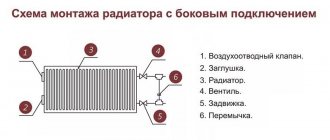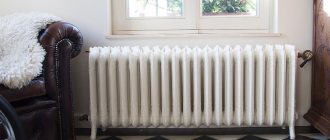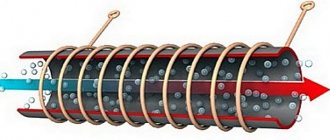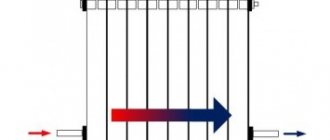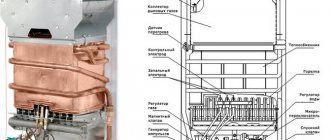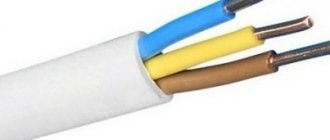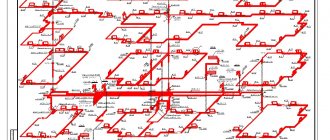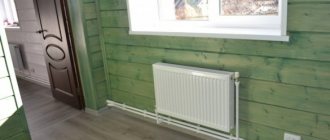Warning
: Use of undefined constant callback_thumbing_img — assumed 'callback_thumbing_img' (this will throw an Error in a future version of PHP) in
/var/www/u1241734/data/www/birzhaplus.ru/wp-content/themes/sreda-design- nocat/includes/kama_thumbnail.php
on line
337
A special type of modernized batteries are vertical heating radiators for an apartment. They are not installed in a window sill niche, but are hung directly on the wall near panoramic windows, balcony or interior doors. Most models have excellent design, but it is important to know the features of these heating devices.
A mandatory element of any living space is a heating system, in particular radiators.
What are vertical heating radiators
When purchasing real estate, you often have to make repairs, including replacing heating appliances. Even with the usual modernization of an apartment, it is often necessary to change the batteries, which are hopelessly clogged and practically do not heat.
In addition to the usual models located under window openings, today there are vertical analogues installed on walls.
When studying offers from heating equipment catalogs, potential buyers often pay attention to vertical radiators for heating an apartment. They differ from classic batteries in their unusual design and proportions, as well as in the absence of the need to look for a special place for them.
As a rule, a vertical heater is a painted metal panel or a tubular cascade in a modern design. They fit perfectly into most styles, have excellent thermal output and excellent appearance, as in the photo.
It is logical that heating radiators are called vertical, the sections of which are located vertically.
Vertical designer radiators are distinguished by their design and more respectable appearance. Behind the elite appearance are ordinary pipes for supplying hot water or antifreeze, but their price is justified by the harmonious appearance.
Prices: summary table
| Model | Working pressure, atm | Maximum pressure, atm | Heat dissipation, W* | Cost of 1 section, rub. | Price, per 1 kW of power, thousand rubles. |
| Loten Gray V 1750 | 16 | 24 | 208 | 3400-4000 | 19 |
| KZTO Harmony 1-1750 | 15 | 20 | 512 | 1200 – 2100 (factory holiday) | 2,3–4 |
| Arbonia 2180 | 10 | 15 | 209 | 3000 – 4000 | 15–20 |
| Royal Thermo PianoForte Tower | 15 | 45 | 200 | 2000 | 10 |
| Mandarin 1200 Alum | 15 | 16 | 210 | 3500 – 4000 | 16–19 |
| Purmo Vertical | 6 | 10 | Depending on size | According to price |
*Note. Measurements are carried out at a temperature difference between the coolant and air in the room equal to 70°C
When choosing vertical radiators, you should pay close attention to the technical characteristics of the products declared by the manufacturer and confirmed by certificates. In this case, it will be possible to avoid accidents in the heating system and additional costs for equipment repairs.
Heating radiators
Pros and cons of vertical format radiators with bottom connections
The excellent design of a vertical panel or tubular heating radiator is the main advantage of this format. They fit perfectly into most modern design concepts. Some models can hardly be called a “battery” until you touch a warm surface with your hand.
A distinctive feature of such systems is their orientation in height with a reduced width.
Vertical units are installed in addition to horizontal equipment or instead of traditional batteries. It is easier to find a place for them when there is no window sill niche or it is not spacious enough to install a large heating unit. They are characterized by:
- high thermal output;
- variety in color and design;
- ease of installation (all parts for installation are included);
- space saving (a little space in width on any free wall).
Among the “disadvantages” are:
- more time is needed for “acceleration” during primary heating;
- uneven heating at high altitude and insufficient pressure in the system;
- relatively high price;
- tendency to clog in the lower part of the radiator, where the coolant is supplied.
The main sign of contamination is cold radiators and warm pipes that are connected to them. Since all the dirt accumulates at the bottom, they have to be disconnected periodically and purged or washed. An exhaust valve must be installed at the top point to remove excess air.
Thanks to this arrangement, it is possible to fit such batteries even into a small space, maintaining the required amount of thermal energy.
Color combinations
Stylists advise taking into account the following nuances:
- direction in the interior;
- combination of shades;
- illumination
It is much easier to choose a palette if the style for the kitchen and living room has already been selected. For example, neoclassicism and Provence have their own combinations. In a classic interior, designers combine pastel colors, pale colors, which are slightly diluted with dark shades.
In French country houses you can often see soft blue, pink, and pistachio colors. Art Deco designers make up objects and finishing materials in black and white, sometimes beige and brown or silver and black. The main thing is to choose a shade for the walls. White will become universal, it will expand the space, and later you can paint them with any paint.
However, in the cooking area, white ceases to look fresh. Beige or gray shades would be more practical. This background will highlight the other colors. In a monochrome interior, designers recommend gluing wallpaper in an unusual color or with a photo print.
Waterproof surfaces are easy to clean, so washable wallpaper is recommended. The colors of the furniture echo the details and accessories, be it cushions for the sofa, curtains or other items.
- Cast iron radiators
Radiator flushing
- Gas convectors
Types of vertical radiators on the wall
Today, many interesting models of heating equipment have been developed that can easily replace old rusty pipes and clogged cast iron accordions. New types of batteries, including vertical ones, are classified according to different criteria:
- metal (cast iron, steel, aluminum, bimetal);
- mounting method (floor with legs, wall with brackets);
- functionality (radiators and heated towel rails);
- by external design (tubular, panel, sectional);
- according to the method of connection to the heating system (side, diagonal, bottom “saddle”).
The systems can be located almost from the floor to the flow, up to the height of a person.
From all the variety you can choose the most suitable model. It should be recalled that vertical tubular panels fit perfectly into the design of an insulated balcony or loggia. They are mounted on the end walls on both sides to ensure full convection.
By spreading infrared thermal radiation (similar to solar heat) at the height of a person, they provide increased indoor comfort.
Cast iron heaters
Cast iron products are considered “classics”, since this is the format of heating equipment that has been used for almost a century. The main disadvantage is that they are heavy and bulky; there are certain difficulties when installing them yourself.
Due to their high performance properties, cast iron batteries are very popular.
An important advantage of this type of vertical radiators is their inertness to the composition of the coolant. They do not react to the composition of water and its acidity, and are not prone to corrosion. However, organic suspension, calcium deposits and rust, which was brought from the heating circuit pipes, quickly accumulate in cast iron sections.
Steel radiators
The most common material for heating devices. Stainless steel is lightweight and ductile for the manufacture of batteries of any format. But we can say that it is “stainless” only conditionally. In terms of other performance parameters, these batteries have practically no equal.
Steel radiators are quite in demand, which is primarily due to their affordability.
Modern alloys are quite resistant to chemical reactions. Internal chrome plating of surfaces minimizes the corrosion process. But over time, small abrasive particles of the coolant cause damage to the protective layer. The air and moisture that remains in heating devices in the summer after draining the water gradually destroys the “stainless” steel.
Aluminum batteries
A lightweight, ductile metal, aluminum has proven itself well in vertical radiators. They do not require additional painting, searching for a suitable decorative shield or other design technique.
The product is lightweight, neat in appearance, durable and affordable.
However, all-aluminum radiators for urban environments are rarely preferred. Most often, bimetallic models are made from this metal, where only the external parts are aluminum. The coolant flows through a steel tube. This soft ductile metal also has disadvantages:
- incompatible with copper, which is found in heating boiler parts;
- connecting units cannot withstand the maximum load during water hammer (cracks, depressurization, leaks are possible);
- With sudden mechanical shocks, the radiator may lose its impeccable appearance (scratches, dents).
Lightweight products of modern design, resistant to corrosion are the main positive characteristics. Vertical models are often produced not only from aluminum, but from bimetal and in the form of combined design proposals.
The products are characterized by high thermal efficiency, but overheating is possible in the fin area.
Helpful information! The catalogs contain not only aluminum radiators, but also offers in the form of vertical heated towel rails and horizontal benches with wooden seats for heated bathrooms.
These are models with different functionality, but they are more suitable for a closed heating circuit in cottages and large country buildings.
The most efficient and reliable systems consisting of an inner and outer pipe.
Bimetallic heating devices
This type combines the advantages and disadvantages of 2 types of heating devices for a comfortable apartment microclimate:
- aluminum;
- steel.
Typically this is a steel tubular base in an aluminum casing. A mixed-type bimetallic battery withstands water hammer and low quality warm water in urban systems. But over time, the protected inner layer of galvanization wears off under the influence of small abrasive particles, they rust and fail.
The material for the outer pipe is usually aluminum with an enamel coating.
Externally, vertical bimetallic panels are perfectly perceived in a modern interior. They do not have to be hidden behind curtains, screens or furniture, as is often necessary with old cast iron products.
Scandinavian
This style came into fashion several years ago, but still does not lose its relevance. Its practicality and European elegance are well suited for a living room in a city apartment or house. You can add bright accents, for example, textiles of different shades.
The basis for the Scandinavian style is white and gray finishing, wooden details. To decorate the space, pink, blue or ocher elements are suitable.
What size of wall-mounted water heating radiator to choose
If we talk about the dimensions or dimensions of vertical radiators for an apartment, then they are less limited. Horizontal type batteries should be placed in a niche under the window. There are certain requirements that are important to comply with in order to have maximum thermal output.
The decisive criterion when choosing a heating radiator is its heat transfer.
Popular height formats range from 1200 – 1500 and up to 2000 mm. Large panels are used in rooms with high ceilings and specific “concrete jungle” rooms:
- loft apartments;
- apartments with panoramic views;
- housing with “French” windows (low window sill);
- apartments with hinged balcony doors with glazing.
The power of the system is selected taking into account the area of the room, the presence and number of walls in contact with the street.
Vertical wall-mounted thermal units have fewer format restrictions. Of course, compact designer panels are easier to integrate into interior design. But tall and deep models give off more heat, provided that they are not dirty and connected correctly.
Heat source
This equipment is also divided according to the source of coolant. There are two types. The first includes water that heats the gas boiler. In this case, such devices are called vertical water heating radiators.
The second type includes a coolant equipped with special oil. In this option, electricity is used to heat the heating devices.
- The latter option, compared to the first type of heat source, is more expensive for the family budget.
- Therefore, they are not particularly popular and are used more as an additional or temporarily replacing the first source of thermal energy.
Thanks to the built-in thermoregulation system, which allows you to use an electric radiator when the temperature drops.
How to choose a vertical radiator based on its thermal power
Heating devices made from different metals have different heat capacity indicators, and the efficiency depends on their shape. Therefore, it is important to take into account not only external parameters, but also all these relationships when choosing one or another vertical model.
For an apartment where the likelihood of water hammer occurring is higher than in a private house, it is better to choose cast iron or bimetallic products.
Note! The technical description for each product indicates the thermal output. The ratio of calories supplied must match the footage or volume of heated air in the room.
In some cases, it is necessary to combine horizontal and vertical batteries to provide full heat. These are corner rooms in houses without external insulation with an open loggia.
For unusual interiors, you can choose designer radiators.
An additional vertical block behind the balcony door, as in the photo, will add warmth on cold winter evenings.
Important! To carry out the most accurate calculations of the ratio of heating devices and battery format, there are special formulas and computer programs. They include all coefficients and amendments regarding footage, climatic conditions of the region and other housing parameters.
Laconic batteries with a single color will fit into almost any interior.
Multi-level floor
To zone the space, craftsmen install floors at different levels. They advise installing a podium to separate the kitchen and dining room. This option is considered one of the most practical because, among other things, the owners have additional free space where they can hide something.
It is convenient to use boxes or crates for this. Wicker baskets will look good. But such space can remain free.
For podiums, reliable materials are selected that can withstand heavy loads. Usually builders make wooden or metal podiums.
However, such a design should not be made if there are small children in the family, since the podium can become an obstacle for him. In addition, various floor coverings can be used.
They will zone the space between the living room and the kitchen and protect the podium from damage. For example, tiles are laid in the kitchen area, and laminate flooring in the dining room. The main thing is to choose colors and textures and combine the finishes correctly.
Features of installing high radiators
Connecting batteries of any format has a lot in common, regardless of the model type. Connection to the heating riser is made in different ways:
- diagonal (most effective);
- lateral (standard);
- bottom connection.
Among steel elements, tubular systems are considered the safest.
Helpful advice! Before purchasing, it is important to make sure what type of connection this model will correspond to.
Vertical panels are usually connected from below, but, if possible, it is better to weld the pipes to make a diagonal coolant supply. It will ensure the most efficient filling of the battery with warm water before returning to the return line.
Vertical batteries must be installed on reinforced walls, otherwise, due to the heavy weight, the structure will simply fall, tearing out part of the wall.
With a lower connection, all recommendations remain the same as for horizontal cast iron accordions. But vertical models have one feature - the water pressure in the system should be enough to fully fill the heating equipment.
Provence
The name of this destination comes from a region in the south of France. Even a small kitchen-living room, the decor of which was inspired by French aesthetics, will be filled with warmth and comfort.
The main thing is that it has a lot of daylight, textiles with romantic prints, and floral patterns. The dining room in the Provence style is designed in pastel shades. Furniture items can be vintage or artificially aged. Plain walls will contrast with large checkered curtains.
The door in the kitchen area set is sometimes replaced with curtains made from the same material as the tablecloth. A good addition would be vases and figurines, clay pots, forged metal parts and ribbons.
Famous brands of heating radiators
The production of designer and vertical blocks is carried out by:
- Arbonia;
- Global,
- Zehnder;
- Enix;
- Kermi;
- Bethatherm.
Their certified products can be viewed in catalogs on official websites and in specialized retail outlets.
The designer batteries, which can be made using various decorative techniques, evoke admiration.
As you can see, the classic horizontal cast iron accordions have a worthy alternative - vertical radiators that are excellent in design.
Neoclassical
Even popular music has echoes of ancient motifs. The same can be said about the design, in which classic details are framed in a fashionable design.
This style is characterized by symmetrical lines, framed mirrors, arched openings, and antique accents. All this is complemented by fashionable finishing materials and accessories. Neoclassicism combines sleek modern details with traditional combinations.
